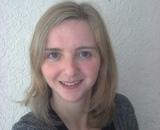 Why does a medical humanitarian organisation like Médecins Sans Frontières (MSF) hold a yearly scientific conference? The common image of MSF has more in common with Angelina Jolie’s film efforts than with the well trodden academic routines of powerpoint presentations and poster galleries. Although venues and audiovisual technology have changed since the conference was first launched in 2004, the overall aim has remained the same: to improve the quality of research presented by MSF and ultimately it is hoped the quality of MSF’s medical programmes.
Why does a medical humanitarian organisation like Médecins Sans Frontières (MSF) hold a yearly scientific conference? The common image of MSF has more in common with Angelina Jolie’s film efforts than with the well trodden academic routines of powerpoint presentations and poster galleries. Although venues and audiovisual technology have changed since the conference was first launched in 2004, the overall aim has remained the same: to improve the quality of research presented by MSF and ultimately it is hoped the quality of MSF’s medical programmes.
Of the many descriptions of what research brings to MSF, one of the best is by Philipp du Cros in this video where he explains how research presented at the MSF Scientific Day can ultimately save lives.
On 25 May the MSF scientific day is being streamed online live for the first time and viewers can join in by asking questions during the discussion sections, as well as commenting on the issues raised using the Twitter hashtag #MSFSD or the comments form below the video stream. Online-only films from MSF projects and beyond will be shown during the breaks. There will also be an electronic version of the poster gallery. We hope to be joined by anyone with an interest in medical humanitarian issues and with access to an internet connection or smart phone.
This year a key theme is the increasing role of digital technology in humanitarian aid. Our keynote speech is on “digital humanitarianism.” Paul Conneally (UN agency for information and communication technologies) will talk about the potential of digital technology in the humanitarian response, whether the evidence on the ground justifies the hype about these new approaches and what the future might hold. In the same session, MSF researchers will present work on using digital mapping systems to estimate population size and remote diagnosis of tuberculosis via teleradiology. Should MSF invest heavily in these new technologies? Is this is the future of humanitarian aid? Let us know on the day.
Equally innovative are approaches described by Helen Bygrave to improve adherence to HIV treatment in a population of migrant farm workers who regularly cross borders; their disease doesn’t stop at the border, but their treatment all too often does. In the same session pioneering treatment for a stigmatising complication of kala azar and a new tool for screening for psychological issues in very young children continue the theme of treatment for often neglected populations.
While there is a desperate need for new HIV drugs, the lack of options means that available drugs must be safeguarded. The first session of the day highlights what happens when adherence to treatment is poor and the reasons that patients have difficulty adhering, how patients failing second-line treatment can be helped to adhere to treatment, and the risks for drug resistance from a planned phasing out of a widely used HIV drug. Also in that session, a large survey across 13 MSF projects looks at the risk factors for death in a group of patients neglected in international policy – children with tuberculosis.
Later in the morning, the session “How far should we go?,” presents MSF programmes that treat patients often neglected in humanitarian aid where treatment is deemed too expensive or complex. How should MSF balance the equation of trying to help as many people as possible with pioneering treatment for neglected groups? Where do MSF’s responsibilities end?
The final session of the day looks at translating research data into action. Nathan Ford, the medical coordinator at the MSF Access Campaign, will present on how research data are used in advocacy, what is done with the results of MSF research and what the future might hold in the digital age. Over 50% of research presented at the scientific days has been published in peer-reviewed journals (Nathan Ford, personal communication). But what happens next? Does it change the lives of the people that MSF assists? Tracking publication and citation of research provides one measure of dissemination and impact but does not capture the impact of research on policy or programmes. Encouragingly, in a survey of past scientific day presenters over 80% of research presented was reported to have had an effect on MSF operations; about 50% had an effect on internal MSF policies and about 50% influenced external policies.
To end the day, Jonathan Smith, from Yale University, will screen clips from a heartbreaking and inspiring film that he is making about the lives and deaths of miners in South Africa. An epidemiologist, he decided that publishing research was not enough and that to effect change he had to try a radically different approach which he will talk about here.
We hope that you will join in the debate and discussions and help MSF to continue to improve the quality of analysis of its research and ultimately the quality of the assistance that it provides to those in need.
Sarah Venis, medical editor based in the Manson Unit at MSF, London, UK. Her role is to advise on and edit MSF research publications and blogs, and to manage the MSF Scientific Day.
Follow @msf_uk and #MSFSD. Twitter question and answer sessions with presenters will be held in run up to and after the day. Live streaming will be at: http://www.msf.org.uk/Scientific_Day.aspx from 09.30 GMT +1 25 May. Talks will be available to download from 28 May to end August 2012.